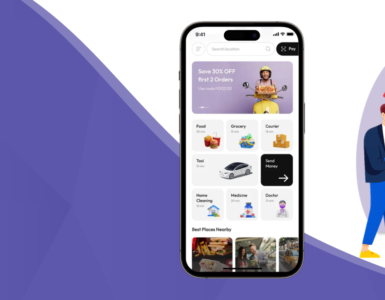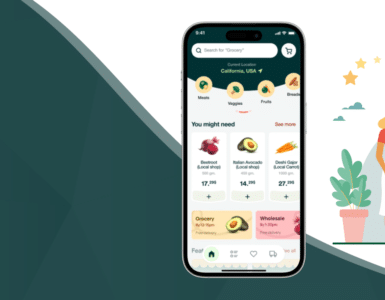Do you feel pride in your original app idea? Then you might also worry that someone could steal it and use it for their own benefit. Just like there are intellectual property laws to protect trademarks and inventions, your mobile app ideas also need legal safeguarding.
Many entrepreneurs and startups actively explore how to patent mobile app ideas to avoid theft, resale, or duplication. If your mobile application is refined and market-ready, there are always copycats ready to exploit your hard work. Without protection, you risk losing both recognition and revenue.
Understanding Mobile App Patents
Have you ever heard about the legal disputes between Microsoft and Apple? Apple once accused Microsoft of stealing ideas from the Lisa user interface (UI). However, because Apple hadn’t secured a proper patent, Microsoft had the upper hand legally.
A patent is a legal safeguard under intellectual property law that ensures your idea cannot be copied, altered, or sold by someone else without your permission. By patenting your mobile app, you can claim ownership, prevent modification or resale, and ensure you’re credited for your innovation.
Is there any way to patent the idea for mobile apps?
 Can You Patent a Mobile App Idea?
Can You Patent a Mobile App Idea?
Yes—but with conditions. While you cannot patent app code (that’s covered under copyright law), you can patent specific processes, functions, and interaction methods in your app.
Here’s a list of app components that may qualify for patents:
-
Networking
-
Data pushing
-
Messaging services
-
User identification
-
Security functions
-
Device interactions
-
Data privacy controls
-
Third-party transactions
-
Visual data representation
-
Feedback reporting
-
Database creation
-
Backend and mobile processing
-
Mobile UI (User Interface) behaviors
Under U.S. patent law, two primary types of patents apply to mobile apps:
-
Design Patents – Protect the unique appearance/UI of the app.
-
Utility Patents – Protect processes, functions, and systems.
Let’s dive into what it takes to patent your app idea.
9 Key Steps to Patent a Mobile App Idea
1. Ensure the App Is Your Own Invention
Your app must be a completely original invention. If you’ve poured your time, energy, and creativity into it, you deserve to protect it. Remember, a mobile app is not a tangible product, but it qualifies as a technical invention in most jurisdictions.
2. Your App Must Be Unique and Original
You must prove that your app idea is distinct and not derived from existing apps, articles, books, or pending patents.
- To verify, conduct an in-depth prior art search across app stores, patent databases, and existing products.
- External Tool: WIPO IPC Catchword Index
3. It Should Be Functional and Valuable
Your app must serve a practical function and offer value to users. It’s not enough for the idea to be new—it also needs to solve a problem, operate on a logical framework, and be technically feasible.
4. Investigate Existing Patents
Before applying, perform a comprehensive patent search to ensure no one has already patented a similar concept.
Most countries have public databases. In the U.S., refer to the USPTO patent database.
If you find a similar patent, consult a professional to determine whether your idea still qualifies under novelty criteria.
5. Hire a Patent Attorney
The mobile app patent process involves technical and legal complexities. Hiring a certified patent attorney increases your chances of approval and helps you avoid errors in documentation and claims.
Look for lawyers experienced in software patents and intellectual property rights.
6. Document the Invention Process
Your idea is just the start—documentation is key. To prove ownership and support your application, maintain records like:
-
Development timeline
-
Technical drawings
-
App flowcharts
-
Functionality descriptions
-
Wireframes or working prototypes
These materials help define your “method” or “process”, which is what’s often patentable.
Related Resource: From Concept to Code: Mobile App Development
7. Conduct a Patent Search with Your Attorney
A formal patent search (also known as a prior art search) helps you avoid future infringement disputes. Your lawyer will check:
-
Existing national and international patents
-
Technical literature
-
App stores and commercial tools
This step is essential to ensure your application is legally solid.
8. Choose Between Provisional and Non-Provisional Applications
You have two patent application routes:
✅ Provisional Patent Application
-
Easier and more affordable
-
Doesn’t require formal claims
-
Provides a 12-month window to build and test your app (MVP)
-
Allows you to use “patent pending” on marketing materials
✅ Non-Provisional Patent Application
-
More comprehensive and expensive
-
Requires a complete claim and app description
-
Starts the patent examination process
-
Which should you choose?
-
-
If you’re testing your MVP or refining your concept, go provisional.
-
If you’re ready to commit and want faster results, go non-provisional.
-
9. Submit the Application
Once all documents are prepared, file your application through the USPTO or your respective country’s patent office.
You’ll typically need:
-
Oath or declaration
-
Entity status form
-
Application Data Sheet (ADS)
-
Claims
-
Technical drawings
-
Fee payment sheet
-
Information Disclosure Statement (IDS)
Official Link: USPTO Application Portal
What Happens After Submission?
Be patient. The patenting process can be lengthy and repetitive. It often involves:
-
Office actions (questions or rejections from the examiner)
-
Re-submissions
-
Amendments to claims
On average, it may take 3–5 years for a mobile app patent to be granted. Mark Zuckerberg famously waited six years to get one of his Facebook patents approved.
Is Patenting Right for Every App Owner?
Not always. While patenting is beneficial, it isn’t always practical—especially for startups.
Consider these factors:
-
High costs: Legal fees and filing expenses can exceed $10,000–$15,000
-
Limited protection: Slight changes to the app can help others bypass your patent
-
Time delay: Patent processes can delay time-to-market
Instead, speak with your app development company to explore alternatives like NDAs, copyrights, and trademarks, depending on what best fits your business goals.
Final Thoughts
Patenting a mobile app isn’t just a legal checkbox—it’s a strategic decision. While it offers security and ownership rights, it also demands time, effort, and capital.
Make sure you:
-
Have a unique, functional idea
-
Are prepared to document and defend it
-
Have legal counsel to navigate the process
If your mobile app idea has the potential to disrupt industries or drive massive user adoption, securing a patent can be a worthwhile investment in your future success. Would you like help drafting a provisional patent outline or connecting with a certified attorney? Let us know reach out directly—we’d be happy to assist.

























